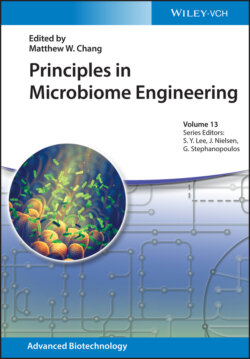Читать книгу Principles in Microbiome Engineering - Группа авторов - Страница 23
1.1.3 Current Approaches Employed in Studying the Human Microbiome
ОглавлениеAs mentioned in the introduction, the era of multi‐omics studies propelled microbiome research with the advancement in 16S ribosomal RNA sequencing and shotgun metagenomic sequencing technologies. This gave rise to big data analysis of bioinformatics data acquired from donors of various backgrounds and health states, providing various new platforms to accelerate the analysis of large datasets, such as gcMeta [55] and MicrobiomeAnalyst [56].
Employing 16S rRNA gene sequencing enables the profiling of most prokaryotic amplicons that accurately classify and identify prokaryotes on a routine basis [57, 58], providing a reliable evidence to support phylogenetic study [59]. On the other hand, shotgun metagenomic sequencing provides a closer understanding of the total genomic DNA makeup of an isolated microbe. This approach provides the complete profiling of the isolated microbe to investigate the unique traits of the microbes and its role in the microbiome (e.g. metagenomic assembly and binning, metabolic function profiling, and antibiotic resistance gene profiling) [60, 61].
These technologies provide researchers with a glimpse of the gut microbiome composition, facilitating research breakthroughs on the role of each individual microbial group and their roles in a state of equilibrium. The prospect is optimistic, but further refinement of the technique is needed to understand the many unclassified components of the microbiome that has yet to be annotated.
